Wronki 2024-10-28
Wronki Railway Station.
Geographic coordinates: 52.705N 16.386E. Elevation 54 m (177.17 ft). Address Dworcowa Street 2, 64-510 Wronki.
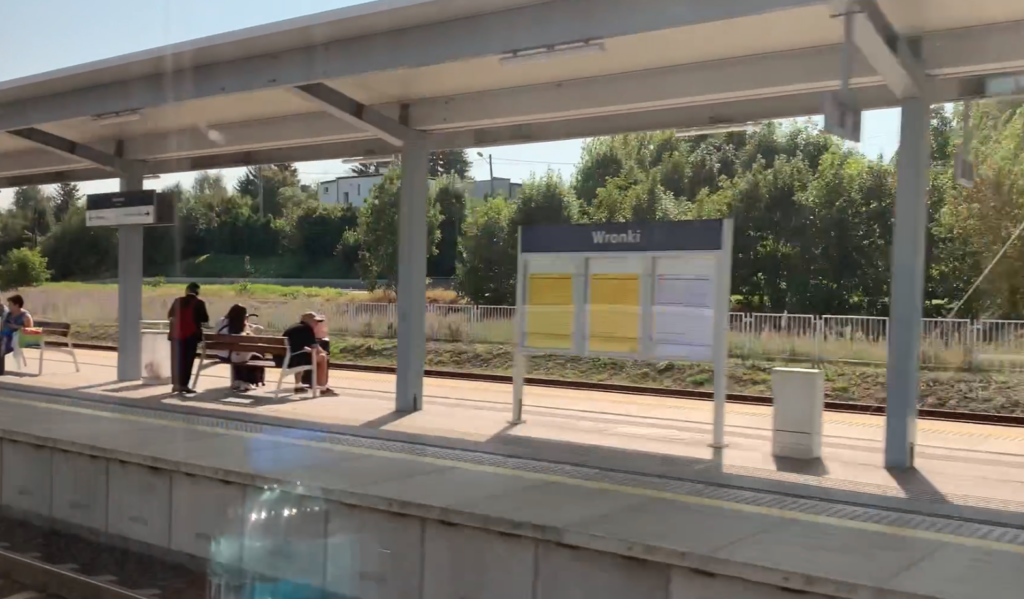
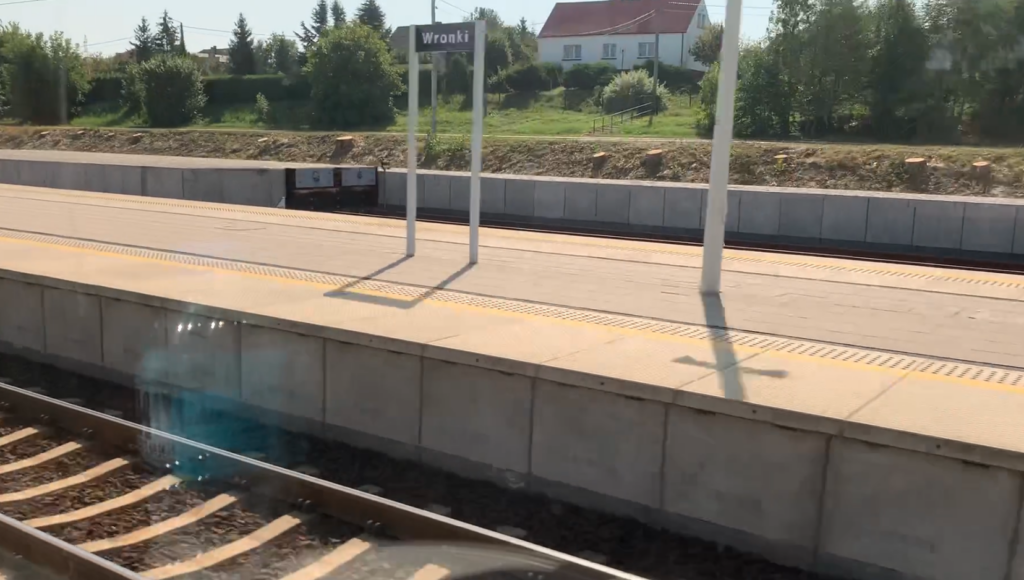
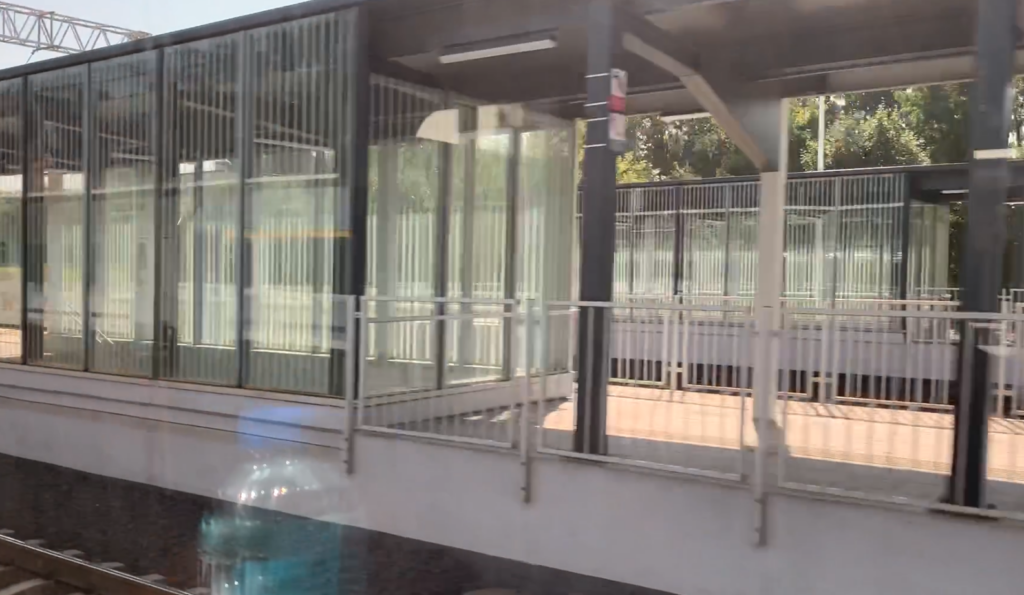

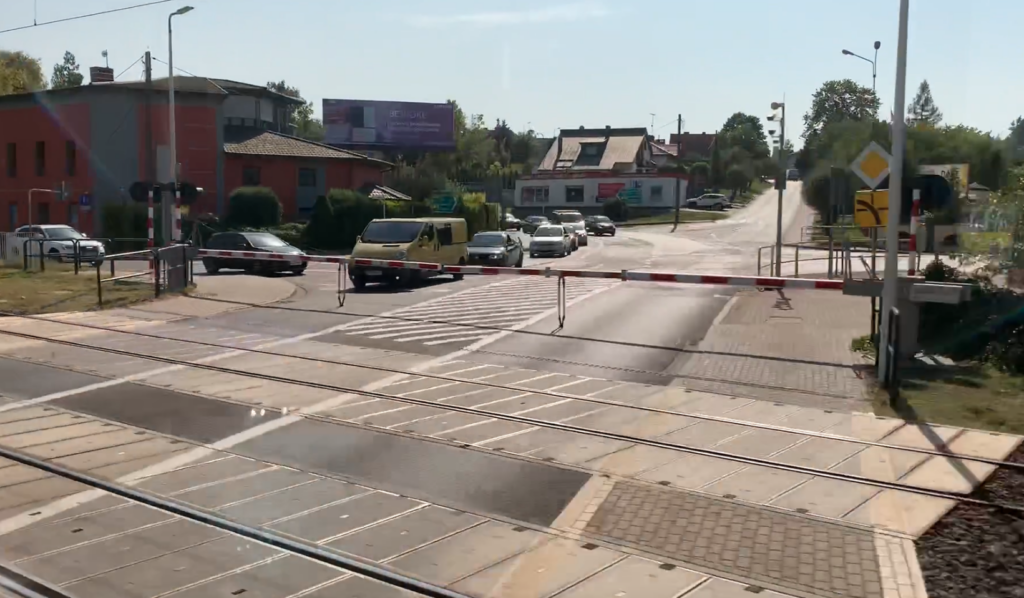
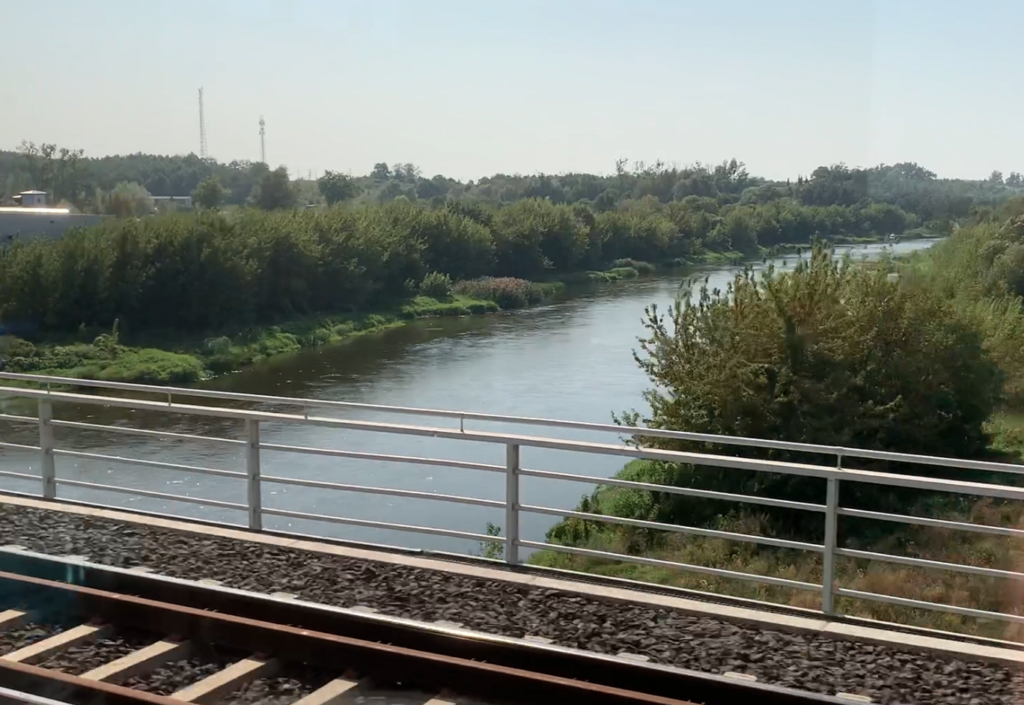
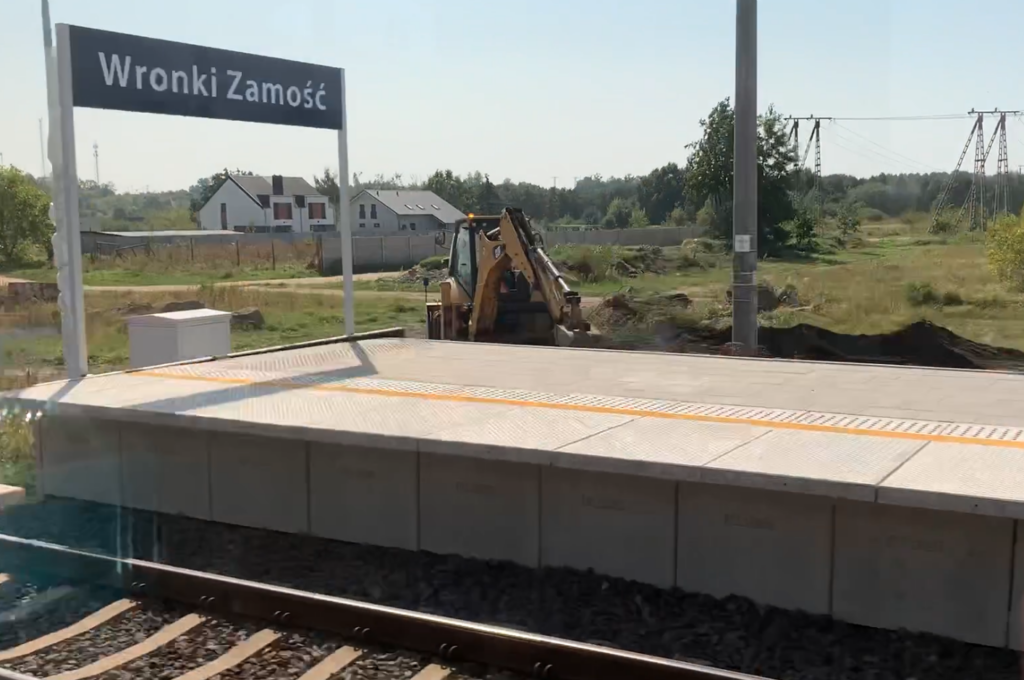
The city of Wronki.
The city of Wronki is located in the Wielkopolska province, in Szamotuły county. The city is the seat of the urban-rural commune of Wronki. The city has an area of 5.81 km2. The population is 10,562 (2023). Wronki is located north-west of Poznań. It is 51 km from Wronki to Poznań. The city is located in a bend of the Warta river, on the border of the Poznań Lake District and the Noteć Forest. Wronki is known for its large household appliance manufacturing plants; Amica and Samsung. The largest prison in Poland is located in Wronki. The prison in Wronki is one of the largest and oldest prisons in Poland, established in 1894, in Germanic times. It is a high-security facility, which is why it has become one of the most recognizable buildings in the city.
Excavations have confirmed that people inhabited this area as early as 4000 BC. The settlement was founded in the 11th century, on a land and river communication route. It was a noble settlement. In 1279, Duke Przemysł II founded a monastery for the Dominican Order. Historians believe that this was the location of the city. It is known that already in 1390, there was a customs house, which brought profits to the city. In 1793, the second partition of the Republic took place, as a result of which the entire Greater Poland fell under Germanic rule. The name of the city was changed to the Germanic Wronke. A period of oppression and Germanization of Poles began. Thanks to the Catholic faith, Poles retained their national identity and established various organizations that stimulated patriotism. A great success was the establishment in 1857 of the Volunteer Fire Department, one of the oldest in the Republic of Poland.
In 1848, the Stargard – Krzyż Wielkopolski – Wronki – Poznań railway line was launched. The line allowed travel to Szczecin and Berlin, and from 1851, to Bydgoszcz and Tczew, and from 1856, to Leszno and Wrocław. The railway line contributed to the economic development of the city.
As a result of the Greater Poland Uprising, Greater Poland returned to the reborn Republic of Poland. Polish organizations came out of hiding and new ones were founded. Cultural, sports and educational life began to develop. In the interwar period, the largest employer was the Potato Processing Factory. The plant exists to this day (2024).
Railway in the city of Wronki.
In 1848, the Stargard – Krzyż Wielkopolski – Wronki – Poznań railway line was launched. The line allowed travel to Szczecin and Berlin, and from 1851, to Bydgoszcz and Tczew, and from 1856, to Leszno and Wrocław. On August 10, 1848, the first train in the history of the city departed from Wronki to Szczecin at 11:16 a.m. The second, towards Poznań, departed at 2:33 p.m. The entire journey from Poznań to Szczecin took five hours and thirty-two minutes. The railway line was routed through the city, bypassing the city centre on the southern side. The railway station is on the eastern side of the city.
The station building was erected on the northern side of the tracks, from the city centre side. It is a medium-sized building and built in the style of Germanic eclecticism with elements of Tyrolean architecture. This can be seen in the wooden elements of the roof. The rafters are extended and supplemented with braces. The building has a polygonal plan on the plan. The building is two-storey with a developed attic and basements. The building was built of red Greater Poland brick with many decorative elements. There are numerous cornices and decorative window and door frames, which were made of light plaster. The windows and doors are topped with arches. The roof of the wooden structure is covered with ceramic roof tiles. The central part is accentuated by a projection, topped with a decorative pediment. The eastern part of the building is covered with a roof with a ridge placed perpendicular to the axis of the building. The building’s charm is enhanced by windows and doors of different sizes in individual parts of the elevation. The ceiling above the basements was made of reinforced concrete beams filled with a brick vault. The ceiling above the station hall was also made of reinforced concrete beams. The remaining ceilings were made of wooden beams. The main hall of the station with ticket and luggage offices was placed in the center of the building. The remaining rooms included a waiting room, a buffet and a social area with service rooms. There was a telegraph room and a telephone switchboard. The building has two staircases leading to the first floor.
The building was built in 1880. The station was entered into the register of monuments of the National Heritage Institute under No. 114/Wlkp/A, on November 29, 2002. The last renovation was carried out in the period 2012-2013. The station in Wronki regained its former glory and once again became the city’s showcase. The renovation cost PLN 3,600,000. Architectural barriers for disabled people were eliminated. In the building on the lower level there is one ticket office, service and commercial premises and toilets. Toilets are a novelty in the station building. Previously, toilets were in a separate building.
In the period 1909-1910, LK No. 351 in the area of the town of Wronki received a second track. This was associated with the reconstruction of the track system at the Wronki station and the launch of the single-track LK No. 381 Oborniki Wielkopolskie – Wronki. At that time (1909), a locomotive shed was built at Wronki station and a railway signal box was built. The water tower was built at the end of the 19th century. A bus stop was created near the station, on the station square in 1975.
Until 1977, there were two signal boxes at the station; the dispatch and executive ones were placed at the station heads. In 1977, SRK relay devices were installed and only one SRK building remained. Light semaphores were installed in 1986. They replaced the shape semaphores. Currently (2024), the station is equipped with ESA 44-PL computer traffic control devices. The new container signal box with “Wr” is located on the Pęcków side. It was put into service in December 2021, after switching on the new traffic control devices.
The station has two double-edge platforms, of the high type. The platform edges are made of prefabricated, gray slabs, with a yellow warning line and buttons. The rest of the surface is made of gray pavement tiles. There is a linear water drain in the surface. The platforms have a roof, benches, rests, waste bins, information boards, audio and lighting. Access to the platforms is provided by a tunnel for passengers, equipped with stairs and elevators. The tunnel provides a passage from the north to the south side of the city.
The station is classified as a local station. Over the past ten years, the station has served 1,400–1,500 passengers per day. The collapse occurred only in 2020, due to the Chinese virus pandemic.
Wronki Zamość passenger stop.
The Wronki Zamość passenger stop is the result of many years of efforts by residents to build it. The stop is located on the right bank of Wronki, on LK No. 351, at Nadbrzeżna Street. The contract for the construction of the stop was signed in 2021, as part of the “Government program for the construction or modernization of railway stops for the years 2021–2025”. The stop was built in 2024. The stop has two single-edge platforms, high type. There are shelters, benches, rest areas, garbage cans, bicycle racks, display cases with railway information and lighting. There are no restrictions for wheelchair users and families with children in wheelchairs at the stop. A parking lot for 20 cars has been built. The trains of the Wielkopolskie Railways stop at the stop.
Railway lines in Wronki.
Railway line No. 351 Poznań Główny – Szczecin Główny, is a mostly double-track line of national importance, electrified with 3 kV DC. The line runs from the south-east to the north-west. The length of the line is 213,500 km. Maximum speed 160 km/h. The electrification of LK No. 351 took place in stages; On June 27, 1975, Poznań Główny – Rokietnica. On September 8, 1977, Rokietnica – Krzyż. On June 21, 1978, Krzyż – Choszczno. On December 15, 1978, Choszczno – Szczecin.
Railway line No. 381 Oborniki Wielkopolskie – Wronki, was a single-track, non-electrified LK, of local importance. The line ran latitudinally and had a length of 31.663 km. The line was put into operation in 1909. On August 31, 1991, passenger traffic was suspended on the line. It was one of the first lines closed to passenger traffic in Poland as part of the liquidation of the railway. Freight traffic was suspended in 1994, but until 2000, freight traffic was carried out periodically. In 2005, the line was removed from the PLK register. The line was dismantled in the period 2005-2013, and the protests of residents did not help. The bridge in Sobotnica over the Warta River, which was entered on the list of technical monuments, was preserved on the line. Geographic coordinates; 52.702N 16.605E.
Written by Karol Placha Hetman
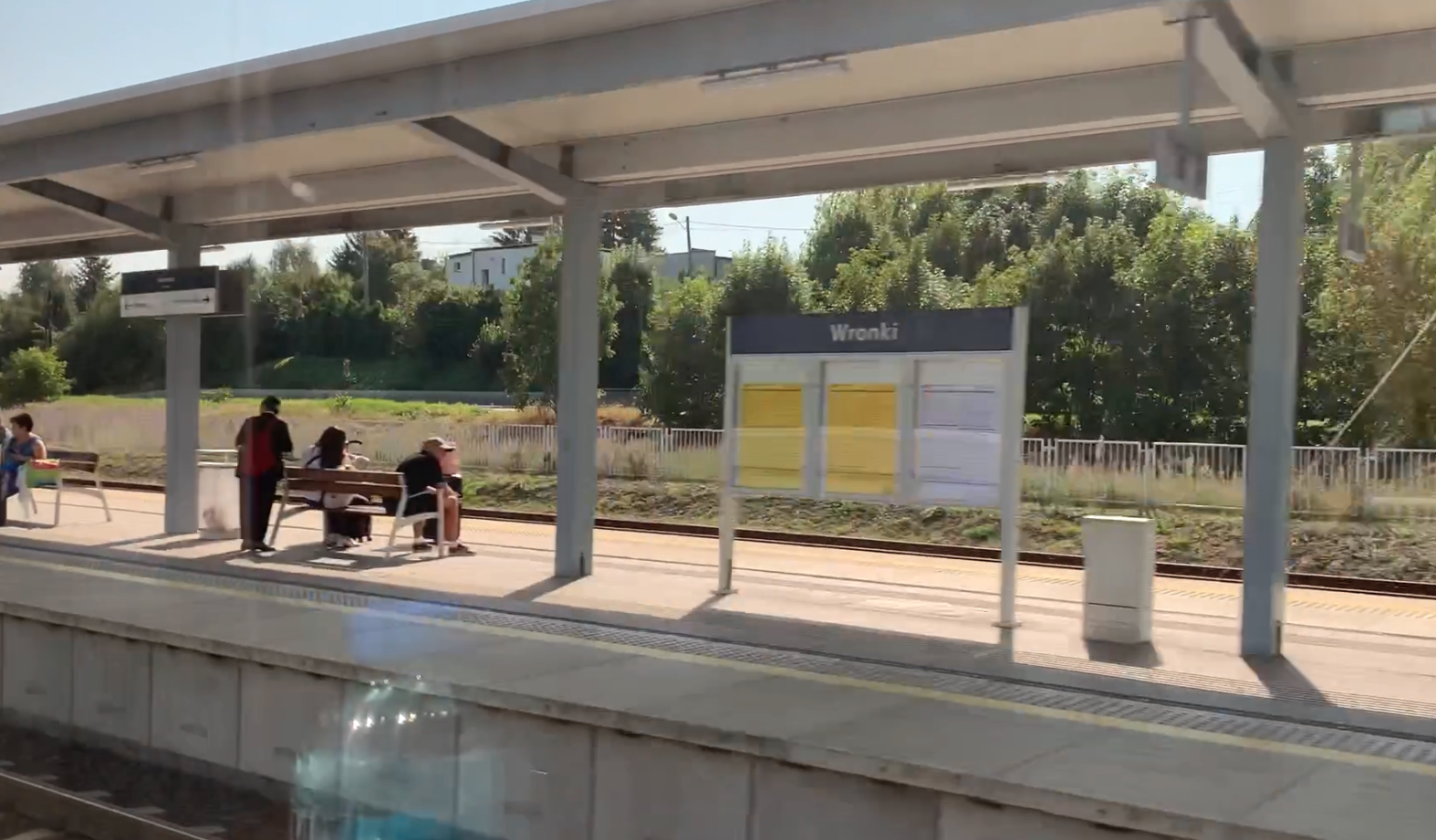
Leave a Reply
You must be logged in to post a comment.